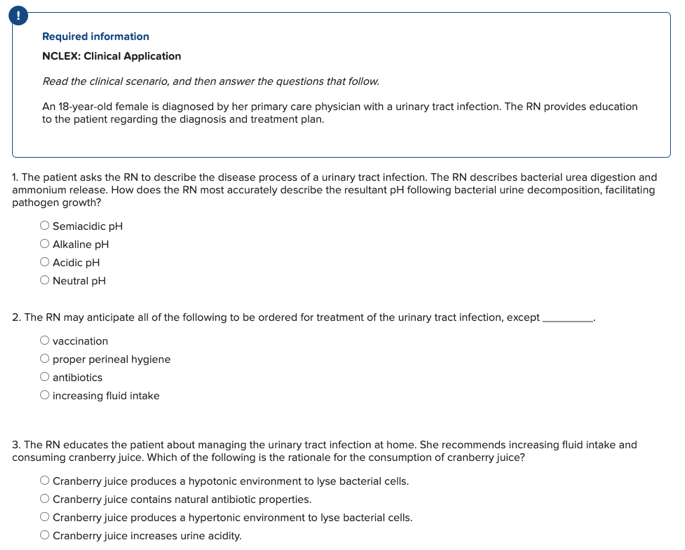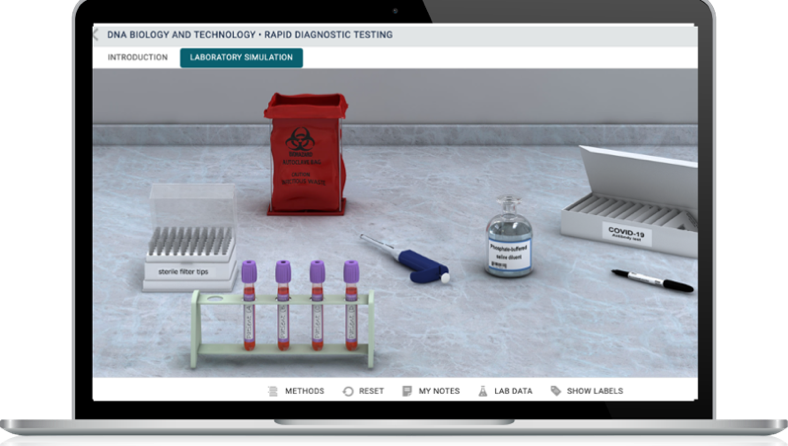Disrupting Your Teaching Approach – I Did with Huge Success!
As an instructor of Microbiology at the University of Missouri, I’m excited to share some of the changes I’ve made in my classroom since returning face-to-face.
As an instructor of Microbiology at the University of Missouri, I’m excited to share some of the changes (for the better!) I’ve made in my classroom since returning face-to-face from our COVID-19 isolations. This came from a change both in my teaching style and through leveraging new teaching technology from McGraw Hill to boost student confidence, connection, and engagement. Hopefully something from this article resonates with your own teaching—or could be applicable to your courses!
My course is Microb2800: Microbiology for Nursing and Health Professions. I teach this course every semester— spring (with an enrollment of 250), eight-week summer (enrollment of 50), and fall (enrollment of 175). My student population is typically freshmen and sophomore pre-nursing or pre-PT/OT/RT. I’m usually lucky if they’ve had college-level chemistry or biology, let alone any of their other core sciences like anatomy or physiology! What they lack in background, they make up for in enthusiasm as they forge to see the RELEVANCE to their future health careers. They are not interested in the random useless facts; they want the diseases and clinical knowledge, but all that knowledge lives in the back chapters of our textbooks! We first need to get through all the theory, mechanisms, lines, and arrows. That’s the classic micro approach, yes? I decided to take a different approach… What if I teach them a small amount and then get them to apply what they’ve learned? So, I gave some microbiology basics and a little bit on virulence factors, and voila! —they were ready to start applying it to Skin and Eye Diseases. They learned about toxins and enzymes, so they can explain impetigo. They know viral replication and can link it to measles syncytia. The engagement in my course went through the roof. Students saw the relevance of “if I know this basic piece and how it works, it explains why my patient’s skin is falling off!” which was highly motivating and helped them make better diagnoses. You need to be up-front with students that the information comes in chunks and then we BUILD on everything. We add in antibiotics in section two, immune responses in section three, then we go back to each disease in their notes and flashcards to add the next piece of content and understanding to their notes or flashcards.

 To facilitate these new combinations, I moved to a flipped-classroom style, which included recorded lectures they watch at home and active learning sessions we do during class time. Using my LMS (learning management system) and McGraw Hill’s ConnectÒ, I sent out announcements every other day to make sure students knew where they should be in their “lecture” progress, helping them stay synchronized with the material. Next, I used the NCLEX bank of questions from McGraw Hill to practice with my students. These are case-based scenarios and questions available for every chapter and included with all McGraw Hill’s microbiology textbooks. Our in-person time starts with Q&A (“what from the recorded lecture is confusing” or “do we need a mini-lecture/review on something as a group”) as I presented notes on the board and walked through concepts. But that typically doesn’t last long because students want to PRACTICE what they know! I pre-make slides with a lot of NCLEX resource questions and flip through to show those that match what we discussed. Students are allowed to discuss or convince their neighbor before I reveal the answer. I then talk through some of the wrong answer explanations, which you can take into your favorite response or polling system (clickers, etc.) which really gets students playing along and connecting what they heard at home!
To facilitate these new combinations, I moved to a flipped-classroom style, which included recorded lectures they watch at home and active learning sessions we do during class time. Using my LMS (learning management system) and McGraw Hill’s ConnectÒ, I sent out announcements every other day to make sure students knew where they should be in their “lecture” progress, helping them stay synchronized with the material. Next, I used the NCLEX bank of questions from McGraw Hill to practice with my students. These are case-based scenarios and questions available for every chapter and included with all McGraw Hill’s microbiology textbooks. Our in-person time starts with Q&A (“what from the recorded lecture is confusing” or “do we need a mini-lecture/review on something as a group”) as I presented notes on the board and walked through concepts. But that typically doesn’t last long because students want to PRACTICE what they know! I pre-make slides with a lot of NCLEX resource questions and flip through to show those that match what we discussed. Students are allowed to discuss or convince their neighbor before I reveal the answer. I then talk through some of the wrong answer explanations, which you can take into your favorite response or polling system (clickers, etc.) which really gets students playing along and connecting what they heard at home!
 While that helps with the lecture component of the course, we still have a wet lab requirement for most of our pre-professional programs. I do the classics here too—gram stains, plating, gel electrophoresis, unknown identification… sound familiar? In the past, students were very hesitant to come to lab for fear of messing up or having to do it over and over for a lab practicum. Confidence in the classroom? Great. Confidence in lab? Nope. I tried pre-labs to get them ready, however, we all know students dislike pre-lab work and most times they skip it or don’t understand it and our lab time is wasted. During the pandemic, we still had to do a “lab” of some sort, so I assigned the McGraw Hill Virtual labs as our replacement.
While that helps with the lecture component of the course, we still have a wet lab requirement for most of our pre-professional programs. I do the classics here too—gram stains, plating, gel electrophoresis, unknown identification… sound familiar? In the past, students were very hesitant to come to lab for fear of messing up or having to do it over and over for a lab practicum. Confidence in the classroom? Great. Confidence in lab? Nope. I tried pre-labs to get them ready, however, we all know students dislike pre-lab work and most times they skip it or don’t understand it and our lab time is wasted. During the pandemic, we still had to do a “lab” of some sort, so I assigned the McGraw Hill Virtual labs as our replacement.
Students liked the quick and straightforward approach to the experiments. While some products will let students fail the lab and then re-do, the McGraw Hill Virtual Labs struck the right balance of allowing students make mistakes but giving them a chance to fix it before proceeding. Students appreciated the “jump right in” without having to do a lot of pre-lab. The necessary information was tacked on the front end of the lab before they even started staining, and they could always go back to practice safely and conveniently. That was my ah-ha! moment. I now assign the Virtual Labs AS the pre-lab! But more than that, completing the virtual lab simulation is their entry ticket to the lab! All they do is walk in and show me on their phone/LMS/printed report from the Virtual Lab that it was completed. It doesn’t take students long; they can just practice the techniques, and it’s safe and comfortable. When they come to lab, I have the activity stations set up to look like what they saw in the Virtual Labs. I have the laminated card with steps to follow, just like what they practiced. Read that again. They already practiced. Music to an instructor’s ears! First-time success in lab protocols has significantly risen. Post-lab assignments then help students review and connect what they’ve learned. There are pre-built questions for the Virtual Labs in your instructor resources that you can build into said post-lab assignment!
The last piece of success in my revamped labs is how much I was able to remove. There are so many things that are just more feasible in an online environment. Have you ever been frustrated having 250 students try to set up PCR reactions? Without really having completed the pre-lab well. Did you have to run the reactions for them? Did they make the gels correct the first time? Do you have time in lab to do that PCR and gel run? Gives me chills just thinking about it. I can assure you (my wife is a registered nurse) that your future nurses are not setting up PCR. They take the sample. They must then know what happens, how it works, and how to interpret it. Do they have to ‘experience’ it to truly learn from it? Use that virtual lab simulation to give them the basics and ability to practice. Then, instead of all that wasted time, spend a few minutes discussing what they took away from the experience. Create some case studies to interpret or find a few of the NCLEX questions about PCR. They start talking about what they did in the Virtual Lab and the application it has to healthcare. It has changed my whole attitude in lab: practice, perfection, application. We still do the absolute classics (Gram staining, streaking for isolation, Kirby-Bauer, etc.). But I’ll never go back to the old “must-do-to-understand”. Less is more if you show them the paradigms. Let them explore microbiology and show their knowledge and understanding in a different way that isn’t so intimidating for your future healthcare professional!
If you would like to discuss my implementations further, please feel free to reach out to me through McGraw Hill. I work as a Digital Faculty Consultant and I’m willing to share any of this that you might want to evaluate for your own courses. I hope you have a wonderful semester!



